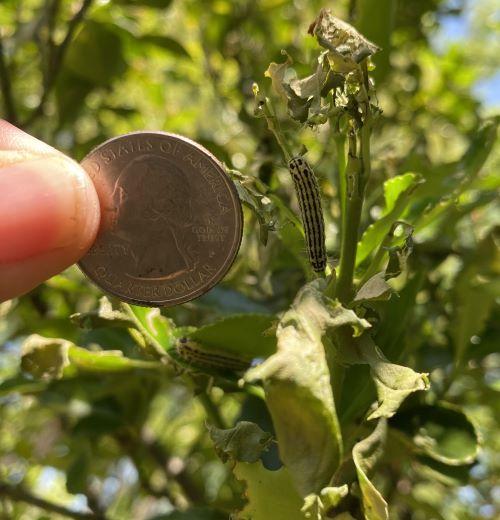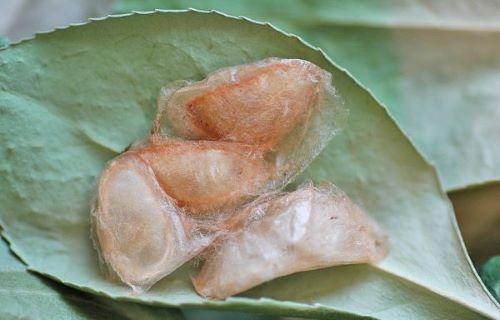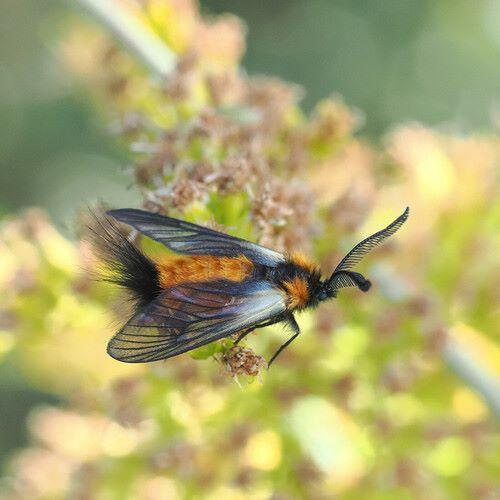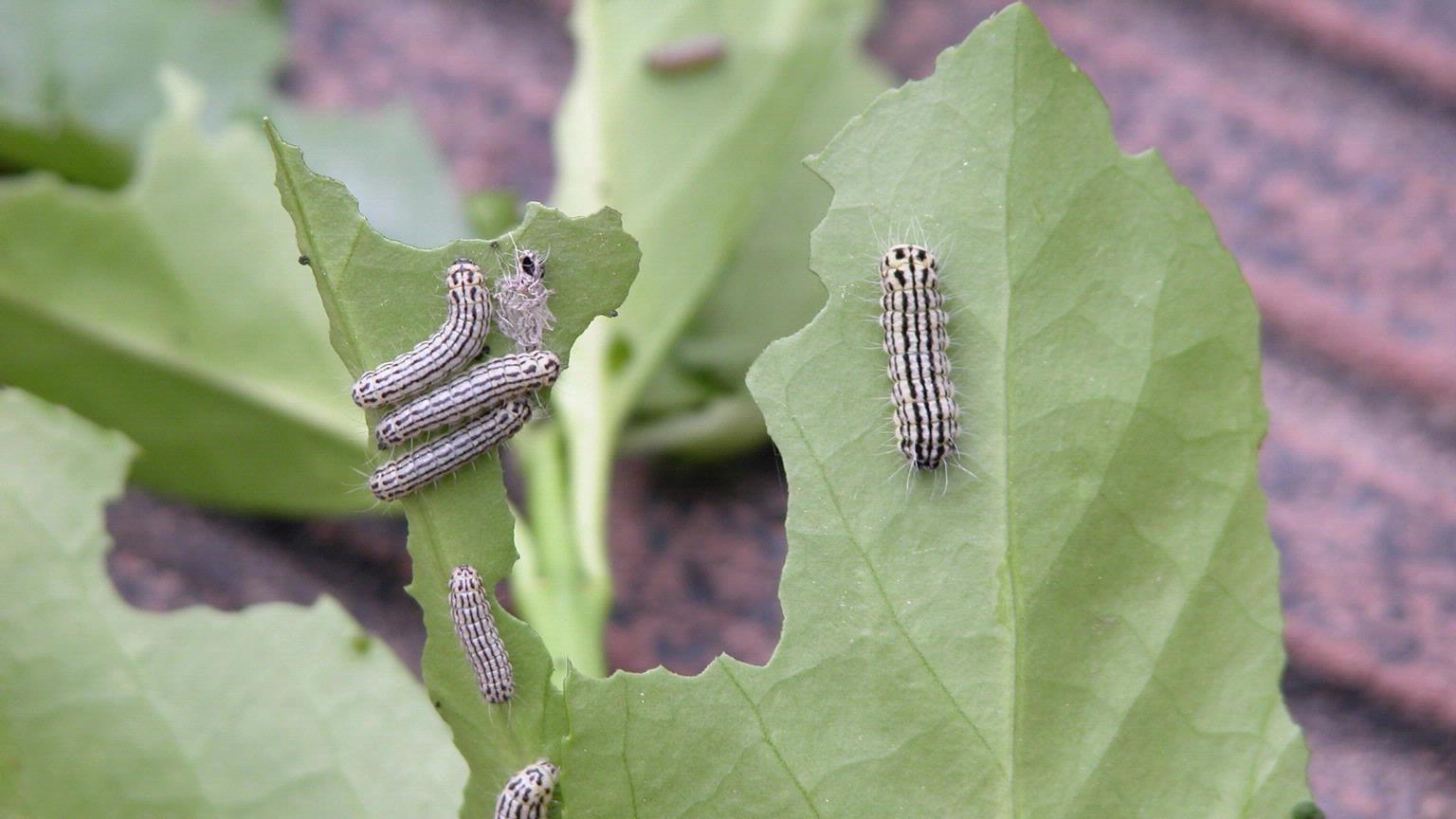Key points
- Euonymus leaf notcher (Pryeria sinica) is a non-native moth species that can defoliate euonymus (Euonymus spp.) and bittersweet (Celastrus spp.) plants during its larval (caterpillar) stage. Euonymus leaf notcher is native to Asia but was introduced to the United States and first discovered in 2001 in Fairfax, Virginia. This insect is now found in both Virginia and Maryland.
- In Virginia and Maryland euonymus leaf-notcher has been observed feeding on Euonymus japonicus and E. kiautschovicus 'Manhattan'.
- Most euonymus plants will recover from euonymus leaf notcher damage, even if no control measures are taken. After the insect’s damaging caterpillar lifestage (typically March through May), euonymus plants have time to grow new leaves.

Identification
- Eggs: The taupe colored eggs are laid in clusters of 100-200 eggs on the tips of euonymus twigs or the underside of euonymus leaves. Each egg cluster is covered in fine hairs (setae).
- Larvae (caterpillars): Caterpillars are light greenish-yellow with multiple black lengthwise stripes.
- Adult moths: The moths have black and orange hairy bodies and distinctive clear wings with dark wing venation. Males have black feathery (plumose/bipectinate) antennae and females have black thread-like (filiform) antennae. Unlike many moths, euonymus leaf notcher moths are active during the day. Some may mistake this moth for a wasp due to its appearance.
- Chewing damage: The caterpillars chew leaves initially skeletonizing or shredding the leaves and as the caterpillars grow larger leaving distincting notched (chewed) leaf margins. Since these caterpillars feed in groups, extensive feeding can lead to defoliation.
Life cycle
- Euonymus leaf notcher has one generation per year in Virginia and Maryland.
- Eggs typically hatch mid-March or early April (37 growing degree days).
- Larval caterpillars feed in groups (gregarious) on euonymus leaves, March through May, progressing from skeletonizing to notching (feeding on the margins of leaves) and defoliating leaves as the caterpillars grow. Young caterpillars may create silk webs around terminal plant shoots.
- Caterpillars will begin to disperse around mid-May, leaving their host plants in preparation for pupation. The caterpillars will pupate inside brown cocoons found in leaf litter, on plant stems and leaves, and on hard surfaces.
- Adult moths emerge from their cocoons around October to mate and lay eggs. The adults are active during the day and can typically be seen until early December.
- Adults moths lay eggs on pencil-sized twigs near terminals of branches or on the underside of leaves. These egg clusters will overwinter until they hatch in early spring.


Management
- Otherwise healthy euonymus plants typically recover from euonymus leaf notcher chewing damage, even if no control measures are taken. This is because euonymus plants have time to regrow their leaves after the caterpillar life stage of this one generation insect.
- In the winter, egg clusters can be pruned out and then destroyed (crushed or placed into soapy water).
- March through May caterpillars can be removed by gloved hands or pruners. With heavy infestations chemical controls like, Bt (Bacillus thuringiensis var. Kurstaki), horticultural oil, or insecticidal soap could be applied to young caterpillars.
- Mid-May until October, leaf litter under infested euonymus plants can be removed to target and remove any euonymus leaf notcher pupae/cocoons. Any found cocoons on plant materials could be pruned out and destroyed.
Author: Madeline Potter, Faculty Specialist - Entomology/IPM, University of Maryland Extension. 5/2024
